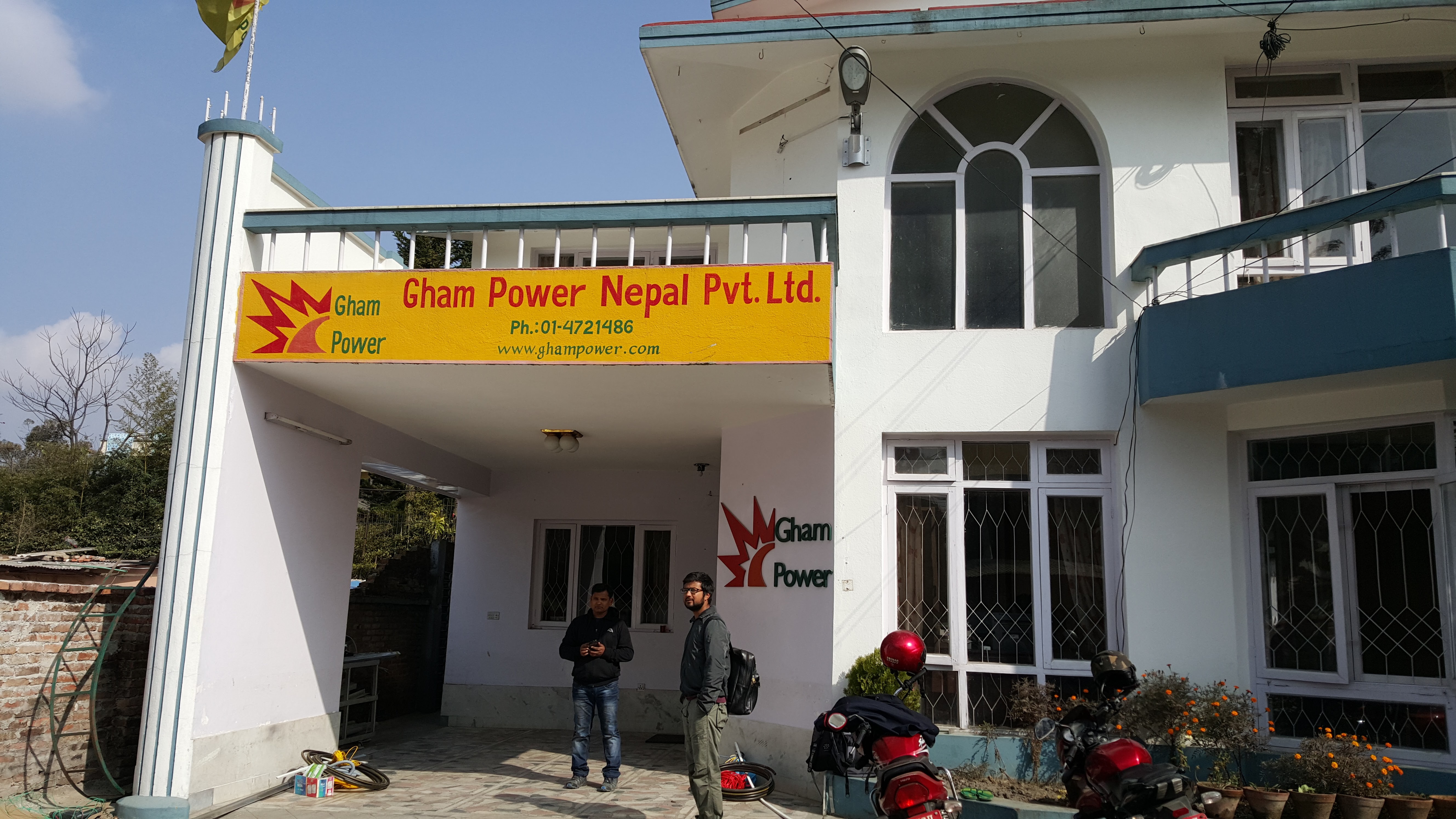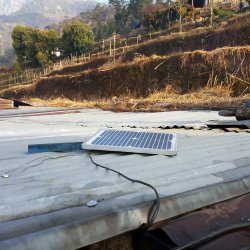Community-based solar micro-grids have great potential to contribute to development around the world. Yet today, few rural micro-grid models exist that are self-sustaining and meet the long-term needs of beneficiaries. GRID Alternatives and Gham Power are on a mission to change that.
The Power Up Nepal pilot project will demonstrate how a micro-grid can be implemented in a sustainable way, providing reliable, high-quality clean energy 24 hours a day and catalyzing the long-term economic development of a rural community.
We interviewed Sandeep Giri, founder and CEO of Gham Power, about Nepal’s energy needs and the role of solar as a solution to the country’s severe energy deficit. Here’s what we learned:
NEPAL’S ENERGY LANDSCAPE
With its population approaching 30 million, Nepal’s energy demands are quickly outgrowing their production capacity. Over 6 million people lack access to electricity, and even those that are connected to the electrical grid in urban areas face blackouts of up to 16 hours per day. The national grid is run exclusively on hydro power, which harnesses the energy of Nepal’s many rapid-current rivers sloping from the Himalayas in the north to the flatlands of the south.
 While hydro power is a clean energy source, it is cyclical in nature. Production is high during the rainy season and insufficient the rest of the year when river levels are low, leading to blackouts and a heavy dependence on diesel generators. Even large businesses and hotels in Kathmandu are not immune to blackouts, and they rely on environmentally harmful and expensive diesel generators just to stay up and running.
While hydro power is a clean energy source, it is cyclical in nature. Production is high during the rainy season and insufficient the rest of the year when river levels are low, leading to blackouts and a heavy dependence on diesel generators. Even large businesses and hotels in Kathmandu are not immune to blackouts, and they rely on environmentally harmful and expensive diesel generators just to stay up and running.
Nepal is in dire need of alternative energy sources to pick up the slack. That’s where solar comes in. Solar has a presence in some of Nepal’s rural regions, where you might see small 40W systems dangling from rooftops, largely the result of a government subsidy allocated to solar home systems. You might notice that most are no longer working, due to a lack of upkeep and maintenance. There is no incentive for the original installers to maintain such small systems in hard to reach rural villages. This has led to a poor perception of solar among consumers, who conclude that the technology is unreliable. “We have to fight that perception”, Sandeep urges.
GHAM POWER
Sandeep was born and raised in Nepal, and came to the U.S. for college. After more than a decade of experience in the Bay Area’s nascent software and technology startup scene, he was drawn to the fast-growing clean tech industry.
Sandeep questioned why so many people were buying diesel generators in Nepal, while solar was getting hot in the Bay Area and beyond. He saw solar as a solution to bridge the energy access gap in his home country and embarked on a new chapter to increase widespread solar adoption. In early 2010, Sandeep founded Gham Power.
Fast forward 7 years, and Gham Power has deployed 600+ successful projects, ranging from large industrial systems, to small businesses, and hundreds of households in both urban and rural areas across Nepal.  Gham Power’s team used their expertise with rural projects to step in at the front lines of earthquake relief last year, bringing temporary light and power to heavily impacted rural communities that had been left in the dark.
Gham Power’s team used their expertise with rural projects to step in at the front lines of earthquake relief last year, bringing temporary light and power to heavily impacted rural communities that had been left in the dark.
Gham’s experience of installing solar in remote locations has taught them that their energy needs are usually for very basic and essential infrastructure, such as lighting, communication, healthcare, and local revenue generation. “Anchor loads,” local enterprises that use power to provide a product or service to the community, have proven key to project success and sustainability. They design their solar micro-grids with these objectives in mind.
“We ask questions like, is there an existing rice mill? Would they benefit from cold storage? Would having solar powered irrigation help grow crops with a better yield?” Sandeep states.
He continues, “Having a rice mill in the community means folks in that village don’t have to walk 3-4 hours to process their crops”
Gham deployed a project in one village where all able-bodied women walk two hours down a dangerously steep hill to a water source, fetch large buckets of water, and walk three hours back up each day. A solar powered pumping solution not only provided significantly more water, but also regained five hours per day of productive time for the women in the community.
Gham Power’s smart solar design, technical expertise, and track record of successful and sustainable rural electrification projects makes them a great partner for GRID’s Power Up Nepal project.
THE MICRO-GRID
Dhapsung residents and businesses will pre-pay for electricity from the 16kW solar micro-grid through a smart meter, which allows them to track electricity usage and avoid using more electricity than they can afford. During daylight hours, the system produces more energy than the community consumes, and the surplus energy can be stored in the battery bank, enabling electricity usage at night.  The system will be managed by a member of the local mother’s group, who will be hired to collect funds from residents and businesses. To ensure the project meets the community’s energy needs long-term, the funds from the pre-pay system will go towards replacement components and a maintenance contract with Gham Power.
The system will be managed by a member of the local mother’s group, who will be hired to collect funds from residents and businesses. To ensure the project meets the community’s energy needs long-term, the funds from the pre-pay system will go towards replacement components and a maintenance contract with Gham Power.
Electricity from the micro-grid will provide a safer, more affordable lighting option for homes; give students and teachers access to the internet and other electronic resources to accelerate learning; charge cell phones and other devices cheaply and locally; and provide local businesses and entrepreneurs with the tools they need to be successful.
As micro-grid models continue to be developed, standards for design can be established across the industry and deployed at a much larger scale to catalyze rural electrification and economic development in Nepal and similar markets- from South Asia to East Africa and beyond.
The Power Up Nepal pilot project will provide a model for successful micro-grid projects that can be replicated in other rural communities to meet long-term rural energy needs.
Please donate today to help build a brighter future for the people of Dhapsung!
*****
The Power Up Nepal pilot project leverages GRID’s expertise with solar energy and sustainable international development to install a 16KW solar micro-grid in Dhapsung, Nepal. The project will power local businesses, the school, and all 40 homes in the community while providing jobs for women and supporting local entrepreneurism. The project will provide a model for successful micro-grid projects that can be replicated in other communities to meet Nepal’s long-term rural energy needs.
Learn more about the pilot project and find out how you can help build a brighter future for the people of Dhapsung.

